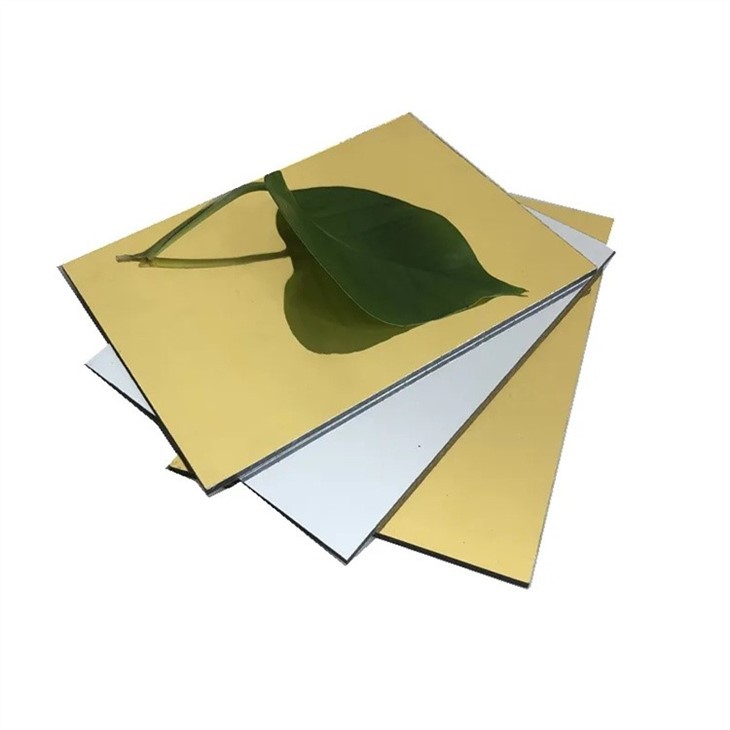Hey there! As a supplier of aluminum cladding panels, I often get asked about the surface finish of these panels. So, I thought I'd sit down and write a blog post to share everything you need to know about it.
First off, let's talk about why surface finish matters. The surface finish of an aluminum cladding panel isn't just about looks. Sure, a good finish can make a building look sleek and modern, but it also plays a crucial role in protecting the panel. A high - quality surface finish can resist scratches, corrosion, and the effects of weathering, which means your panels will last longer and maintain their appearance over time.
There are several different types of surface finishes available for aluminum cladding panels, and each has its own unique characteristics.
Polyester Coating
One of the most common surface finishes is polyester coating. This type of finish is relatively inexpensive and offers good general protection. Polyester coatings come in a wide range of colors, so you can choose the one that best suits your project. They're great for indoor applications or projects where the panels won't be exposed to extremely harsh conditions.
For example, if you're looking for a panel for indoor decoration, the 3mm Pe Coating Indoor Decoration Aluminium Composite Panel Design Acp Sheet is a great option. The polyester coating on this panel not only gives it a nice look but also provides enough protection for the indoor environment.
Fluorocarbon Coating
Fluorocarbon coatings are a step up in terms of quality and durability. These coatings are known for their excellent resistance to UV rays, weathering, and chemicals. They can maintain their color and gloss for a long time, even when exposed to the elements. Fluorocarbon - coated aluminum cladding panels are often used in high - end commercial buildings and outdoor applications.
The Acp Alux Aluminum Composite Panel For Wall Cladding with a fluorocarbon finish is a popular choice for exterior wall cladding. It can withstand the harshest weather conditions and still look great year after year.
Anodized Finish
Anodizing is an electrochemical process that creates a thin, hard oxide layer on the surface of the aluminum. This finish is extremely durable and resistant to wear and tear. Anodized aluminum cladding panels have a unique, natural look that many architects and designers love. They're also very low - maintenance, as the anodized layer protects the aluminum from corrosion.
Powder Coating
Powder coating is another popular option. It involves applying a dry powder to the panel and then baking it to form a hard, smooth finish. Powder coatings offer excellent color consistency and can be formulated to have different textures, such as matte or gloss. They're also environmentally friendly, as they produce less waste compared to liquid coatings.


Wood Grain Finish
If you want to achieve a natural wood look without using real wood, wood grain finish is a great alternative. This finish is created using advanced printing technology that mimics the look and texture of real wood. Wood - grain aluminum cladding panels can add a warm and natural touch to any building, whether it's a residential or commercial project.
Stone Finish
Similar to the wood grain finish, the stone finish is designed to replicate the appearance of natural stone. It gives the building a luxurious and elegant look. Stone - finished aluminum cladding panels are much lighter and more cost - effective than real stone, making them a practical choice for many projects.
Now, let's talk about how to choose the right surface finish for your project. First, consider the location of the building. If it's in a coastal area with high humidity and salt in the air, a fluorocarbon or anodized finish would be a good choice as they're more resistant to corrosion. For an indoor project, a polyester or powder - coated finish might be sufficient.
Next, think about the aesthetic you're going for. Do you want a modern, sleek look or a more natural, rustic feel? The color and texture of the surface finish can greatly impact the overall appearance of the building.
Also, consider your budget. Fluorocarbon and anodized finishes are generally more expensive than polyester coatings, but they offer better long - term value.
As a supplier, I've seen firsthand how different surface finishes can transform a building. Whether you're an architect, a contractor, or a building owner, choosing the right aluminum cladding panel with the appropriate surface finish is crucial for the success of your project.
If you're interested in our Alucobond Aluminum Composite Material or any other aluminum cladding panels, we're here to help. We can provide you with samples so you can see and feel the different surface finishes for yourself. We also offer expert advice on which finish is best for your specific project.
So, if you're in the market for aluminum cladding panels and want to discuss your options, don't hesitate to reach out. Let's work together to find the perfect solution for your project.
References
- "Aluminum Cladding: A Comprehensive Guide" - Building Materials Journal
- "Surface Finishes for Aluminum Products" - Metal Finishing Magazine
- "Choosing the Right Aluminum Cladding for Your Building" - Architectural Design Review